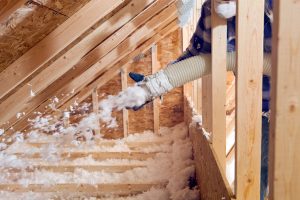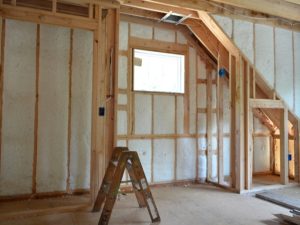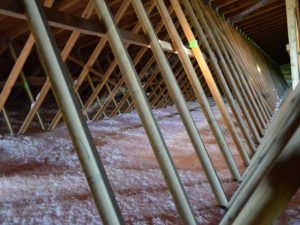An under-insulated home can not only be bad for the health of you and your family, but it could cost you a lot of money in energy costs. Most people don’t even realize the high cost for their electric bill is because of the lack-of insulation. When a home is built, the amount of insulation required by law isn’t nearly enough to allow the temperature to stay warm (or cold depending on the time of year) as it should. Here are a few signs your home might need to have more insulation install.
- No Consistent Temperature: When the thermostat is set is should heat up to that temperature, turn off, and stay warm for a while before it needs to kick the heat on again. As long as each portion of the house is set to the same temperature there shouldn’t be many fluctuations. An under-insulated house will leave the living room and the kitchen feeling kind of warm or way too hot while the rest of the house is an icebox. Or it could leave a bedroom or too warm while the kitchen and living room are fridged. It depends on where the insulation is at its worse. The main issue is that there’s no consistency with the temperature.
- High Bills: With an under-insulated house your bills will end up being suspiciously high. It’s because the energy bill and the heating bill (it doesn’t matter whether you have electric, natural gas, or liquid propane) are being ramped up to try and combat the cold or your heating is just working overtime trying to keep things warm. If your heating is decent you might not notice an issue until the bill comes.
- Cold Everything: Walls, ceilings, and floors should feel just as warm or just slightly cooler than the rest of the house. If there’s a drastic difference it could mean that the insulation isn’t working properly and you’re feeling the cold air from outside.
- Drafty Areas: Another indication that you might have insulation issues is when you feel drafts, especially on windy days. Drafts mean that the area is under-insulated, or there are cracks and crevices that lead to the outside of the house. Those can be filled with some spray foam insulation.
- Extra Visitors in the Home: While mice and bugs are very annoying, they can also help locate the sources of the drafts. Bugs and mice don’t need a lot of space to squeeze through. If they can get through it that means so can any cold air. Once you’ve found their entrance add some normal insulation or spray foam insulation to cover up the areas they’re infiltrating.







